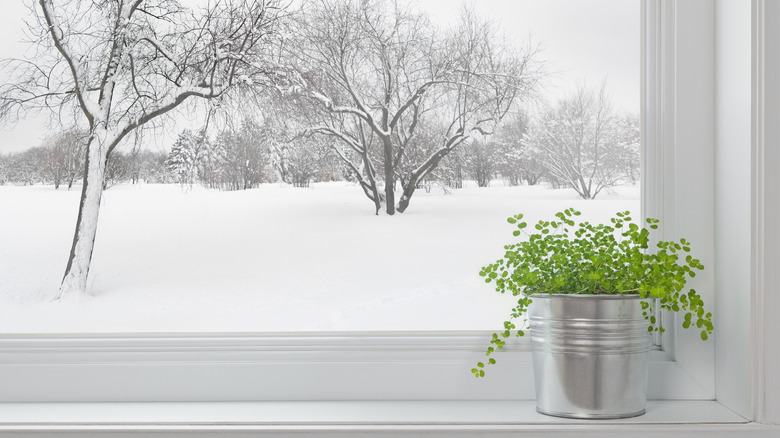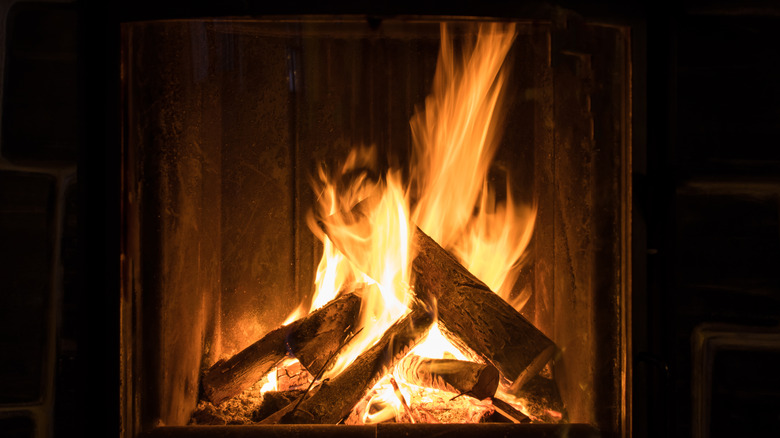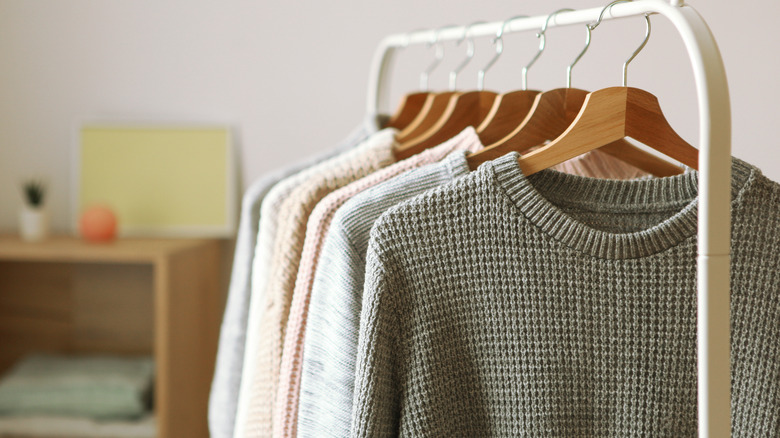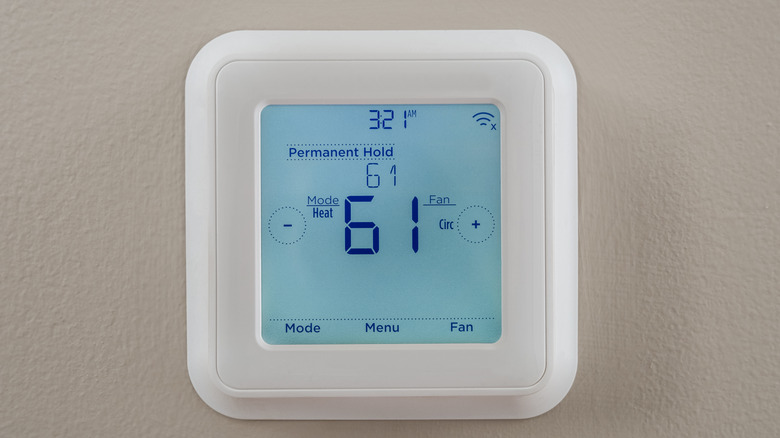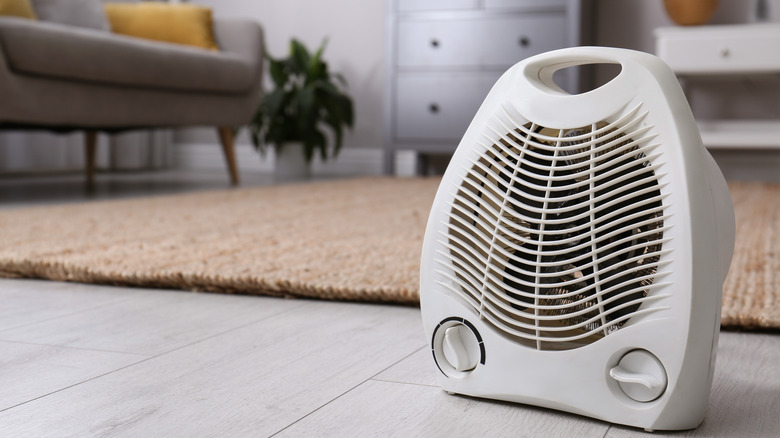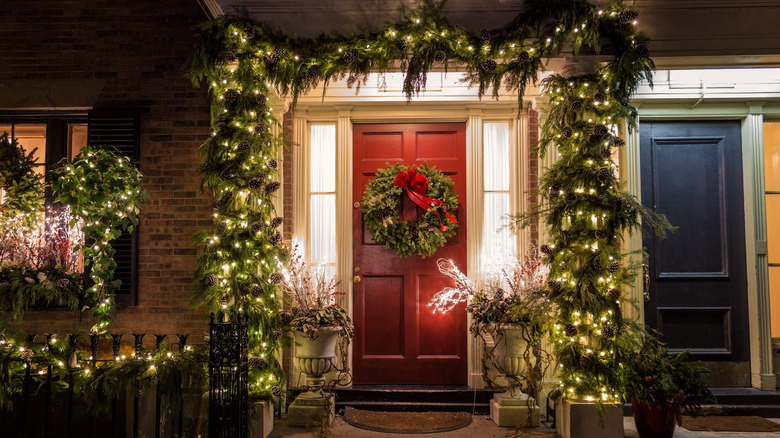5 Tips To Help You Save Energy This Winter
If only we could have two days of summer, two days on either side of spring and fall, and then a winter day. That would make for the perfect week, wouldn't it? Unfortunately, that's not the way the universe works, so we collectively melt into a puddle during the summer months and freeze our prized bits solid when the temperatures plummet come winter.
Well, unless you live close to the equator, no one is going to give you a pass from having to brave the cold weather occasionally, but you don't have to go broke while doing it. Thanks to both modern technology and the help of experts who've studied where and how energy gets wasted in the home, there are ways to sidestep Mother Nature's wrath — if only while you're indoors.
There are innumerable ways you can outwit winter, keep reasonably warm, and actually save money while those around you spend a fortune. Now, months before temperatures begin their annual drop, USA Today reports that consumers can expect to see home heating and energy costs rise. Contributing factors include the end of the European Union's purchasing oil from Russia, the ongoing war in Ukraine, and the domestic instability that has economists arguing about whether inflation is really under control or not.
While most of us can't do much about the state of the global economy, we can exercise much more control over how we respond individually. Here are five ways you can save energy — and money — this winter.
Seal leaks
Your first task involves a bit of detective work because you're on a mission to find and seal leaks everywhere you find them. Where should you begin? Well, you can start outside and work your way around the house and then take the same scrutiny indoors — or vice versa. Basically, you're looking for any place where your living quarters are open to the elements.
At Energy.gov, experts at the federal level remind you to add caulk or weatherstripping to keep heat from escaping even if your windows and doors are closed. You can use plastic film to cover windows, and you should also be on the lookout for those spots where plumbing enters your home. The site provides a checklist to help identify air leaks.
You'll want to seal your ductwork and see that wall cavities are well-insulated. If you own or you're buying your home, just that one step can save you thousands over the years. If you have a fireplace, congratulations. But remember that these charmers are a direct line to the outdoors, and when they're not in use, Constellation suggests you close the damper. In addition, consider installing a glass screen in front of your fireplace. It helps keep the heat inside your home instead of letting it escape through the chimney.
Some homeowners choose an even more energy-efficient route by installing a fireplace that burns gas instead of wood. Full Service Chimney can help you understand just how that process works and why you might consider it worthwhile.
Use your body heat
Some of us prefer warm weather and stripping down to shorts and tank tops. Others complain that eventually, you run out of things you can shed in public, whereas in winter, you can add garments until you're comfortable. But bundling up is an easy way to stay warm and save energy.
Body heat can save you money and energy, so take a look at your winter wardrobe. Since people increasingly work from home these days, many don't have to dress for the office like they once did. That means your overcoat, gloves, and winter boots can be stored away to be replaced by pairs of sweatpants, sweaters, bathrobes, and thick socks or well-insulated slippers (leaving none of your coworkers any the wiser). The folks at Green Groundswell want to remind you that the wool cap you put on outdoors can also keep your ears warm and prevent heat from escaping from your scalp while indoors.
Likewise, fingerless gloves may make you feel like a Dickens character, but they're terrifically functional when you're trying to type, make tea, and field a phone call all at once. Now that you are personally toasty, take a look around. Rugs will warm the coldest hardwood floor and drapes will seal you in relaxing comfort at night. If you're someone who likes a warm bed, The New York Times has some flannel sheets to recommend for the season, and if you work from your couch, a warm throw will always come in handy.
Keep your thermostat low
Now that you're situated, let's take your room's temperature. Clearly, if you're out of the house for more than an hour, you should turn your thermostat down or off to save energy.
You should also think about how you're most comfortable. According to Refinery 29, places like shopping malls set their temperatures anywhere from 59 degrees Fahrenheit (that's Hong Kong) to somewhere in the vicinity of 70 degrees Fahrenheit for most American retail outlets. So the human body can acclimate to a variety of temperatures before registering distraction — which is something you definitely don't want if you're trying to put in an eight-hour workday from home. Only you can pick the temperature that's right for you, but if you're more active around the house — say chasing kids from room to room, for example — you can probably get away with a lower thermostat setting.
If you're going to be away for a while, the professionals at Cagle Service recommend that you set your thermostat at 50 degrees Fahrenheit, which is low enough to save on energy, but nothing that's going to risk freezing pipes or pets.
You should also adjust your water heater to a setting of around 120 degrees Fahrenheit. Not only will that save you the cost of heating it beyond your needs, but it will also prevent you from scalding. Beyond that, Life Hacks suggests that whatever temperature you're most comfortable with, turn down the heat by 3 degrees to see if you notice the difference. Chances are, you won't.
Use alternate sources of heat
Temperature regulators like thermostats and water heaters aren't the only devices that generate heat in your home. Some urban areas still boast apartments with radiators from the pre-war era. These are generally regulated outside the apartment by the building's superintendent or an on-call handyman. And of those, many still work for a charm, and what's even better: most come free with the rent you pay.
For those with undependable radiators or homeowners with large homes in which they don't need to heat every room in the house, space heaters address the issue nicely. In the distant past, they were both unreliable and not always safe, but that's changed. Consumer Reports spent time looking into which ones heat most quickly and are easiest to use, then ranked them for safety.
But there are still other sources of heat you've yet to consider. One of them is your shower. You can run the hot water for a few minutes every few hours and not only warm your place, but humidify it as well. And finally, who never cooks? Even if you only make coffee and muffins or heat the occasional plate of nachos, you are still generating heat. And if you bake a loaf of bread or make a meatloaf, remember that leaving your oven door ajar generates more warmth for the same money.
Best practices
You've got your hardware handled and your soft winter clothes ready, so now your energy savings depend on how you use all that you've learned. And that, more or less, comes down to your daily routine.
For example, Consumer Reports says that one of the best — and easiest — ways to save energy is by washing only full loads of laundry. When you run small or partial loads on a full cycle, those consume just as much energy as running a full load. While washers and dryers are more energy-efficient than ever thanks to stringent federal standards, according to the site, American households used some 10 billion kilowatt-hours of electricity just to get clothes clean last year and consumed another 60 billion kilowatt-hours getting them dry. That adds up quickly to a whopping 10% of a home's total use of electricity per year.
Other energy savers include unplugging those devices you don't use — including your window air conditioner. You can also install LED lights throughout your home, which are much more energy efficient (up to 75%, according to Energy.gov), and they're becoming more diversified than ever. The professionals at Lamp HQ have an online tutorial that can lead you through the specifics.
And finally, you don't want to be like the Griswolds from "National Lampoon's Christmas Vacation" and send the city into a power outage with your holiday lights. Use LEDs, and put them on a timer that turns them off at midnight
